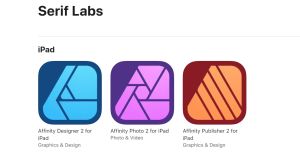 New form factor of RAM: LPCAMM2
New form factor of RAM: LPCAMM2
Even if you’re not a techy person, you know for certain that in the case of RAM (stands for “Random Access Memory,” by the way), the more the merrier. While this is true, it’s not only about capacity; location matters, too. There are two form factors of RAM modules, slotted and soldered. The former are more common and allow upgrades (can be replaced with a more advanced stick, as they are called colloquially), but the latter offer better performance since such modules, as their name suggests, are soldered directly onto the motherboard. This sort of connection, obviously, makes upgrading a more complicated matter.
Micron, a RAM designer and maker, came up with an idea of how to bring the best of both worlds together: LPCAMM2. The form factor of such modules puts them close to the motherboard without soldering, using simple screws. Thus, these sticks are more efficient and easy to replace.
The team of geeks from iFixit got themselves a Lenovo ThinkPad P1 (Gen 7), the first laptop to have the new breed of RAM modules on board, and unscrewed everything that has screws in the device, including those modules. Here’s the video they made in the process.
What’s in it for us?
Simple: more powerful laptops for approximately the same amounts of money makers ask for them now. While this is not a breakthrough but merely an advancement, such small steps are necessary to graduate to the next level. Plus, things get more flexible, since classic DDR modules won’t go anywhere in the nearest future, so you can get your next laptop better tuned to your needs, upping the value-for-money ratio.
Hardware is crucial for performance of a computer, but software also plays an important role. Check out the System Optimization section of the Informer catalog for utilities that can speed up your PC surprisingly well and at no cost whatsoever:
System Tools > System Optimization
And get your copy of Software Informer, the only updater you’ll ever need to keep things fast and well-oiled on the part of programs you use:



